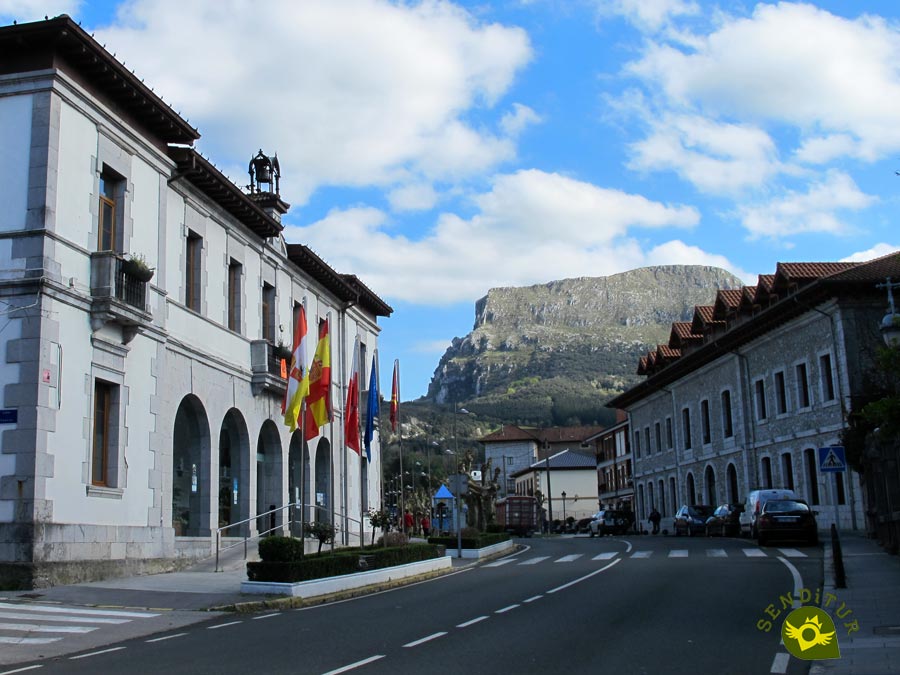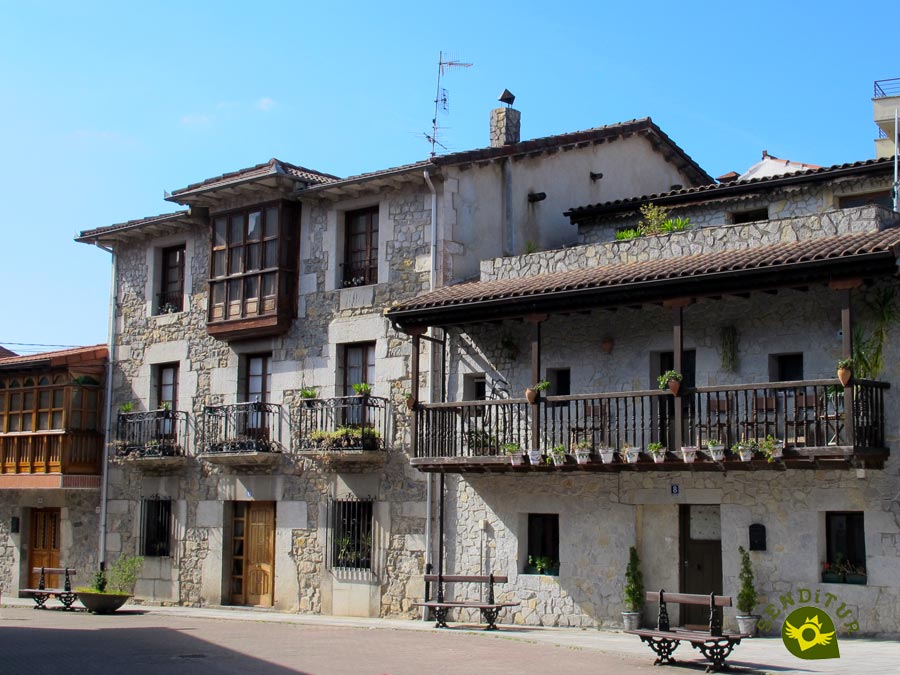It is located in the region of Asón-Agüerado. It is a town in the eastern interior of Cantabria and in its municipal district there are four rivers, the Asón with the Gándara which has previously received the waters of the Calera, and the Carranza. Ramales de la Victoria sits on the valley formed by these rivers, which surround beautiful mountains and spectacular landscapes. Although the origin of the town of Ramales, according to written documents, takes place around the year 1000, the population settlements in the zone go back to the Paleolithic, of it speak the archaeological remains found in all its territory. Roman remains have also been found on roads and bridges. In the Middle Ages it was subject to the jurisdiction of the crown and it was at the beginning of the Modern Age when Ramales saw how it began to have greater importance thanks to being located in the way that communicated Burgos with Laredo, that is to say the plateau with the coast, sign of it was the reconstruction of old wooden bridges of the XVI century and reforms and architectural projects that have left evidence in the typical districts of the locality. Its recent history is marked because it was the scene of the battle of Ramales in which the liberals triumphed over the Carlists in 1839, speeding up the end of the first Carlist War and making General Espartero worthy of the title of Duke of the Victory and the town of Ramales the title of town and the surname "of the Victory".

Ramales de la Victoria does not leave indifferent the visitor who, after visiting the locality and walking its streets contemplating its well conserved popular architecture, its mansions of indianos, the beautiful glazed viewpoints of its houses, its three parochial churches, the one of San Pedro in Ramales, built at the beginning of the 17th century, San Emeterio and San Celedonio in Gibaja, rebuilt at the end of the 16th century at the beginning of the 17th century and recently reformed and Nuestra Señora en Guardamino, whose main chapel was built in the 14th century although the current building comes from the 17th century, its Town Hall, A building built at the beginning of the 20th century to commemorate the liberal victory in the Battle of Ramales and which was originally the courthouse, or the 18th century Revillagigedo Palace, you can complete your excursion through this town by visiting its spectacular natural and scenic environment with pleasant walks along the banks of the rivers until you discover its source and the beautiful waterfalls and springs that the water forms before rushing to the bottom of the valley, or find the remains of old forges, such as the Salto del Oso (Bear Falls), which were installed on its banks, and then enter the bowels of the earth and admire in its caves, including Covalanas or Cullalvera, magnificent cave paintings.

In Ramales de la Victoria San Pedro, patron saint of the town, and San Valentín are celebrated on 29 and 30 June respectively, Nuestra Señora del Carmen is celebrated on 16 July, San Emeterio and San Celedonio on 30 August in Gibaja; in the neighbourhood of Riancho on 24 June San Juan is celebrated and in Guardamino on 8 September the Virgen de Guardamino.
In Ramales de la Victoria there is a traditional celebration called the Verbena del Mantón. The tradition tells that when the general Espartero entered victorious in the town found a curious trunk that in the flight had abandoned the Carlist army, when opening it verified its curious content, shawls of Manila, then Espartero distributed them between the women of the locality. Since then this popular festival has been celebrated, declared of Regional Tourist Interest, in which the couples who participate itself adorn the women with Manila shawl and the men with the typical dress of Madrid and to the sound of the organillo dance a chotis. This happens on the first Saturday of July.

The municipality of Ramales de la Victoria is between mountains full of cavities of all kinds, some reach large dimensions. One of them is the Torca del Carlista, a chasm located very close to the top of the mountain called Picón del Carlista, with its 349 m. deep, is one of the most famous in Cantabria, not so much for its dimensions, which are important and to take into account, as for its huge interior room, one of the largest in the world.

The popular feast of the Milagruco, on September 4, seems to have the origins of a legend. It is said that when some soldiers walked at night along the banks of the Asón River, in the place known as Vegacorredor, they thought they saw lights among the trees dancing around a bonfire. It was the place where the witches gathered, but the brave soldiers did not know so they approached and seeing with great surprise the akelarre formed. Then they decided to attack the witches who fled, spilling the potions of their pots on the ground. The following day, September 4, the people of Ramales, aware of the fact, went to the place where they found, scattered on the ground, the contraptions used by the witches and decided to bury them there. Since that day and in commemoration of what happened every year, a pilgrimage goes to the place and it is celebrated with great revelry that the witches did not return to make an act of presence in those places. It is also said that the potions that were poured on the ground were loving filters and therefore of this place and in this pilgrimage happy courtships and families are forged.
MORE ROUTES AVAILABLE, DON'T MISS IT...
MORE PLACES AVAILABLE, DON'T MISS IT...
Ramales de la Victoria is reached by the national road N-629 that joins it on one side with Limpias, Ampuero and Colindres where the A-8 Bilbao-Santander motorway passes. On the other side, the N-629 connects it with Medina de Pomar and Trespaderne. Ramales de la Victoria is also reached by the C-216 road that goes up part of the river Asón and reaches Solares.
Ramales de la Victoria has a bus service that makes the journey Ramales-Laredo.
In the locality of Gibaja in the municipality of Ramales de la Victoria there is a FEVE train station that covers the Santander-Bilbao line.
SENDITUR is not responsible for any variation in the information described, as well as for the misuse of its guides and recommends that everyone be responsible and prudent in carrying out the activity. Likewise, we invite you to document yourself with books and specialized guides to complement the information described. From the commitment of SENDITUR with Nature and the respect to the balance of the environment, SENDITUR urges you to travel in a responsible way, with low environmental impact and respecting at all times the Natural, Cultural and Social environment wherever you go. For any suggestion, SENDITUR invites you to send an email to .
Continue watching …